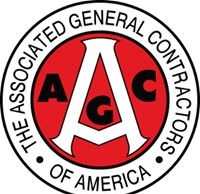WASHINGTON, D.C. – May 16, 2014 – (RealEstateRama) — The U.S. Department of Housing and Urban Development (HUD) and the U.S. Census Bureau today announced the following new residential construction statistics for April 2014:
BUILDING PERMITS
Privately owned housing units authorized by building permits in March were at a seasonally adjusted annual rate of 1,080,00. This is 8.0 percent (±0.7%) above the revised March rate of 1,000,000, but is 3.8 percent (±0.9%) above the April 2013 estimate of 1,040,000. Single-family authorizations in April were at a rate of 602,000; this is 0.3 percent (±0.8%)* above the revised March figure of 600,000. Authorizations of units in buildings with five units or more were at a rate of 453,000 in April.
HOUSING STARTS
Privately owned housing starts in April were at a seasonally adjusted annual rate of 1,072,000. This is 13.2 percent (±13.6%)* above the revised March estimate of 947,000, but is 26.4 percent (±11.8%)* above the April 2013 rate of 848,000. Single-family housing starts in April were at a rate of 649,000; this is 0.8 percent (±10.8%)* above the revised March figure of 644,000. The April rate for units in buildings with five units or more was 413,000.
HOUSING COMPLETIONS
Privately owned housing completions in April were at a seasonally adjusted annual rate of 847,000. This is 3.9 percent (±10.1%)* below the revised March estimate of 881,000, but is 21.2 percent (±13.6%)* above the April 2013 rate of 699,000. Single-family housing completions in April were at a rate of 602,000; this is 2.4 percent (±10.3%)* below the revised March rate of 617,000. The April rate for units in buildings with five units or more was 242,000.
The Census Bureau updated its application programming interface (API) with monthly and quarterly economic indicators. The API allows developers to combine Census Bureau statistics with other data sets to create tools for research on a variety of other topics. For more information, go to ttp://www.census.gov/developers/.
EXPLANATORY NOTES
In interpreting changes in the statistics in this release, note that month-to-month changes in seasonally adjusted statistics often show movements which may be irregular. It may take two months to establish an underlying trend for building permit authorizations, 4 months for total starts, and six months for total completions. The statistics in this release are estimated from sample surveys and are subject to sampling variability as well as nonsampling error including bias and variance from response, nonreporting, and undercoverage. Estimated relative standard errors of the most recent data are shown in the tables. Whenever a statement such as “2.5 percent (±3.2%) above” appears in the text, this indicates the range (-0.7 to +5.7 percent) in which the actual percent change is likely to have occurred. All ranges given for percent changes are 90-percent confidence intervals and account only for sampling variability. If a range does not contain zero, the change is statistically significant. If it does contain zero, the change is not statistically significant; that is, it is uncertain whether there was an increase or decrease. The same policies apply to the confidence intervals for percent changes shown in the tables. On average, the preliminary seasonally adjusted estimates of total building permits, housing starts and housing completions are revised about three percent or less. Explanations of confidence intervals and sampling variability can be found on our web site listed above.
* 90% confidence interval includes zero. The Census Bureau does not have sufficient statistical evidence to conclude that the actual change is different from zero.
Read more about today’s release of housing construction activity.
Contact:
U.S. Department of Housing and Urban Development
Brian Sullivan
Office of Public Affairs
(202) 402-7527
U.S. Census Bureau
Raemeka Mayo or Stephen Cooper
Manufacturing and Construction Division
301-763-5160














